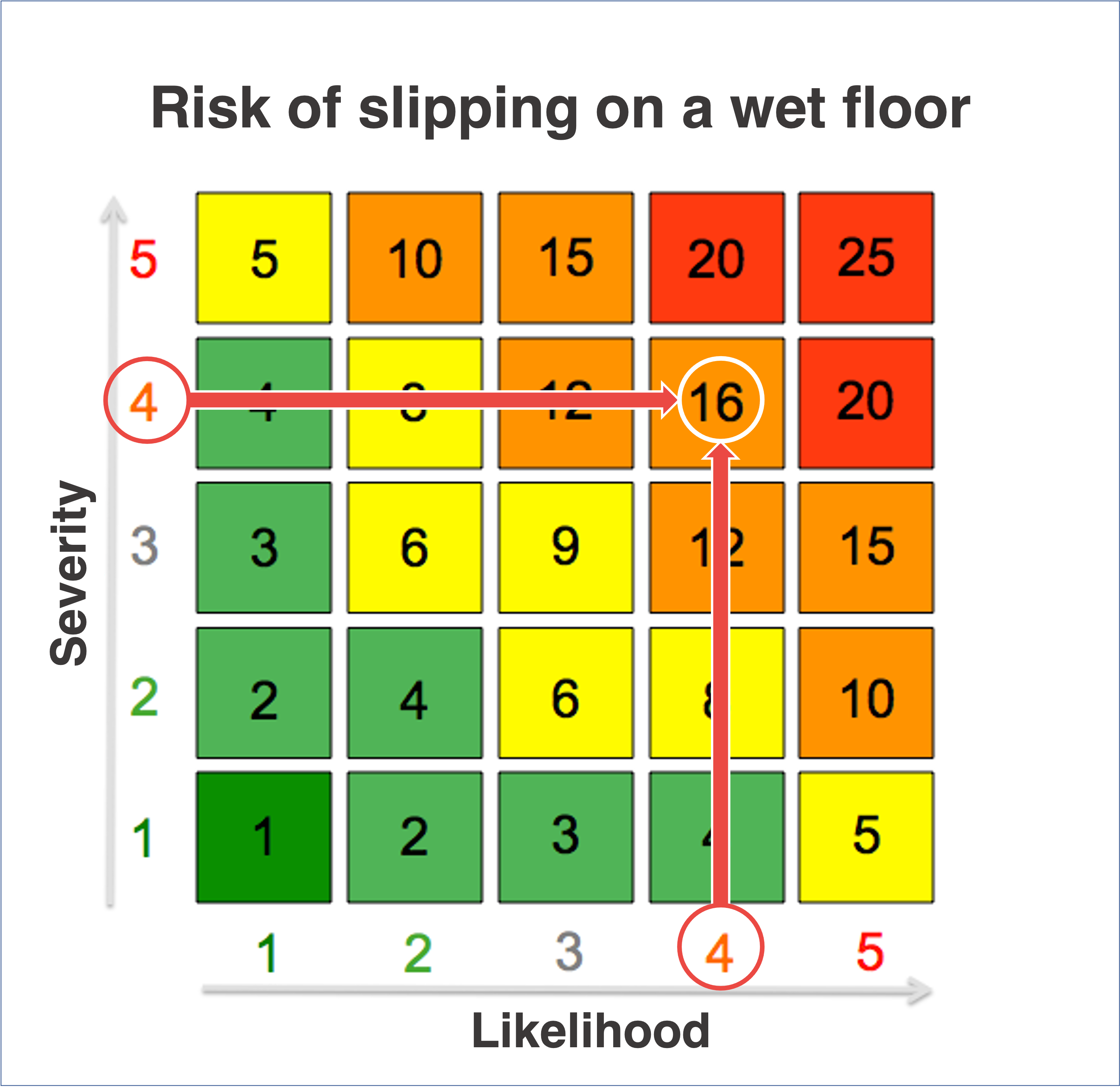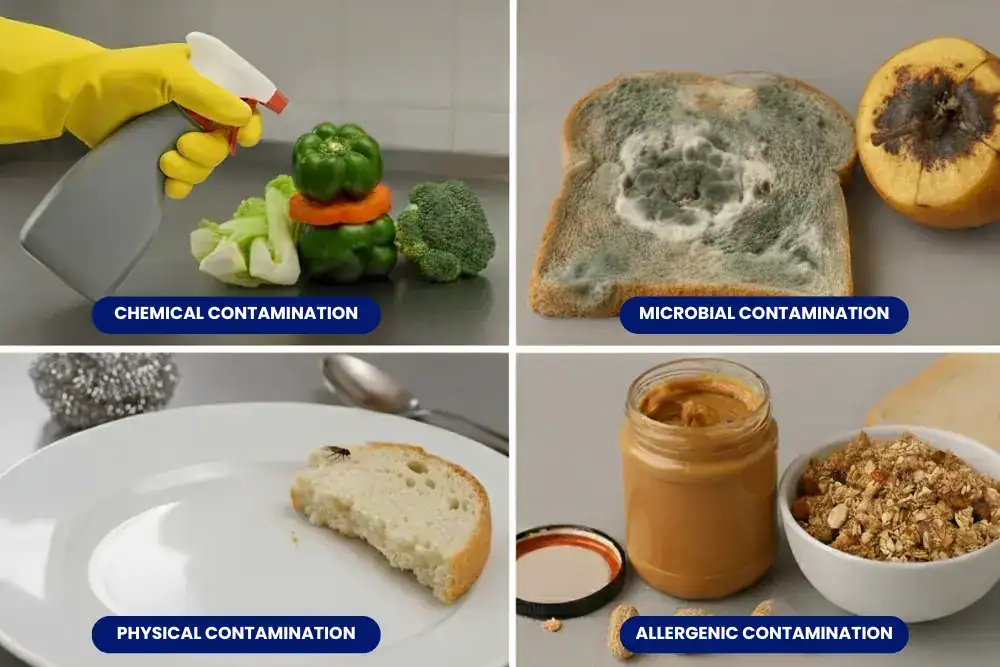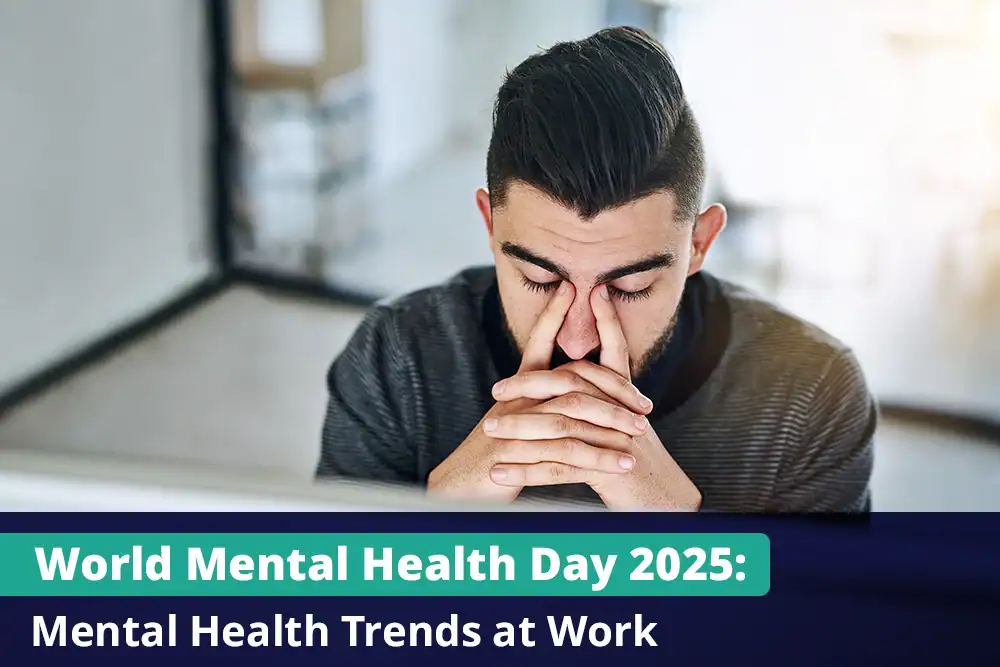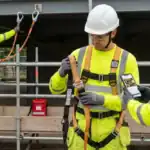
Every workplace has risks that need to be managed. But as an employer or supervisor, how do you know where to start? A risk matrix can help. It assigns each risk a number; the greater the number, the more urgent the issue.
This guide explains what a risk matrix is and how it can be used to optimise safety management in your workplace.
What is a Risk Matrix?
A risk matrix (sometimes called a risk assessment matrix) is a simple grid that visualises and quantifies the risk level of a specific hazard.
One side of the grid shows how likely harm is to happen, and the other side shows how severe the harm would be if it does happen.
The grid is usually five by five, with likelihood ranked from one (low) to five (high) on one axis and severity ranked the same way on the other axis.
Placing a hazard on the risk matrix will give you a visual representation of how urgent it is. The risk level is also shown as a number, found by multiplying the likelihood by the severity.

Hazard vs. Risk – What’s the Difference?
You must understand the difference between a hazard and a risk to use a risk matrix.
What is a Hazard?
A hazard is something in your workplace that has the potential to cause harm. Hazards can be placed into six broad categories:
- Biological – harmful pathogens, sewage, contaminated bodily fluids or venomous/poisonous insects and animals.
- Chemical – substances that can cause illness or injury upon exposure, such as pesticides, exhaust fumes or acids.
- Mechanical – moving parts of machinery that can trap, crush, lacerate or otherwise harm workers.
- Physical hazards – hazards that can cause harm without direct contact, such as loud noises or a lack of oxygen. Manual handling and slip, trip and fall hazards are also included in this category.
- Environmental – environmental factors that can cause injury, such as extreme temperatures.
- Organisational – threats to workers’ mental health, such as stress, isolation or unrealistic workload demands. The use of display screen equipment, such as computers, also falls into this category.
Some common hazards fit into more than one category.
Risk Assessment Training
Our Risk Assessment Training provide vital information to recognise and eradicate a hazard that can cause harm within a workplace or an organisation. Risk assessment is the keystone of safety and health that helps identify and mitigate the possibility of such hazards to ensure safety for all.
What is a Risk?
Not all hazards are equal. You’d feel safer staring at a computer screen than handling a deadly virus without personal protective equipment (PPE). This innate sense that some hazards are more harmful is part of the risk.
Risk is also based on how likely harm is to happen. A worker might suffer eyestrain after a few hours of staring at a screen, but this harm can be avoided with regular breaks. So, the likelihood of harm happening is low (provided the worker has been trained).
Because eyestrain isn’t a serious issue and it’s unlikely to happen if workers are trained, the risk of staring at a computer screen is low.
Compare this with handling a deadly virus without PPE. Infection is obviously a much worse outcome, and it’s likely to happen if protective equipment isn’t provided, so there’s a high level of risk. (In reality, the risk level is so extreme no employer wouldn’t realistically allow this scenario to happen.)
So, risk is a calculation of how severe harm will be and how likely it is to happen. A risk matrix helps determine the risk each hazard represents, making it easier to decide which ones need the most attention and action.
Do You Need to Use a Risk Matrix?
Under the Management of Health and Safety at Work Regulations 1999, every employer must carry out risk assessments of their work activities.
When conducting a risk assessment, you identify hazards and evaluate their likelihood of causing harm and the severity of that harm, i.e., the risk. But there’s no requirement to use a risk matrix to do this. Provided you’re competent and have the necessary knowledge, experience and training, you can carry out the assessment without a formal risk analysis tool like a risk matrix.
But using a risk matrix alongside your assessment can be helpful. They provide a clear visual representation and ranking of risks, making it easier to compare and prioritise them. This is especially beneficial in complex environments where multiple risks have to be managed simultaneously.
How to Use a Risk Matrix
Although they’re sometimes used to assess risks in project management, we’re discussing how they can be used in a health and safety context.
For this explanation, we’re using a typical five-by-five grid, but this is changeable. You can increase the grid size for a closer analysis or reduce it for a straightforward overview.
Likelihood
Each column represents the likelihood of a hazard causing harm. The first column (1) is for hazards that are least likely to hurt anyone. As you move to each next column, the likelihood of harm increases, with the fifth column (5) representing hazards that are almost certain to cause harm.
Severity
Each row in the risk matrix represents the severity of harm if it occurs. The first row (1) is for the least severe injuries. As you move up the grid, the severity increases, with the fifth row (5) representing the most severe injuries, including those that could be fatal.
Risk Matrix in Action
Let’s apply the risk matrix to an almost universal hazard: a wet floor.
In this scenario, the floor is:
- tiled so slippery when wet;
- cleaned regularly during work hours so the area is busy;
- wet for several hours after cleaning because the product used dries slowly; and
- crossed by workers who ignore the “wet floor” sign placed by the cleaner.
This all adds up, making an accident likely. It could be considered a 4 on the risk matrix.
Now, consider the severity. A slip onto a hard floor can be extremely painful. It’s not unusual for workers to suffer sprains, fractures or head injuries after slipping. So, the severity can also be considered a 4 on the risk matrix.
The risk calculation is: Likelihood (4) x Severity (4) = 16
This number indicates the risk should be a high priority.

It would be unrealistic to issue workers with helmets and kneepads to reduce the severity of harm, so you have to attack the likelihood.
You could reschedule cleaning so it’s outside of work hours or provide the cleaner with a more suitable quick-drying cleaning solution. You could also raise awareness of slipping hazards among staff with training. All of these control measures would help reduce the likelihood of a slip happening, lowering the overall risk level.
Key Takeaways
- Risk is an assessment of how likely a hazard is to cause harm and how severe that harm will potentially be.
- A risk matrix is a straightforward tool for visualising and prioritising risks by assessing their likelihood and severity.
- Using a risk matrix helps you identify which hazards need urgent attention.
- Although not mandatory, supporting your risk assessment with a risk matrix can improve clarity and decision-making, particularly in complex work environments.
Risk Assessment Training
A risk matrix is a valuable tool for prioritising workplace hazards, but it can’t substitute your risk assessment.
Our online Risk Assessment Training course explains how to carry out an effective assessment for your workplace. Users learn how to identify potential hazards, evaluate risk levels and manage them using a range of control measures. This knowledge will help you fulfil your legal duties and take meaningful steps towards a safer and more productive workplace.





















